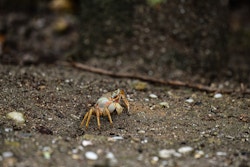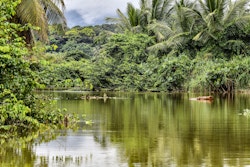Advocating for the regeneration of our soil
7.9 billion people live on Earth to this day. And it is estimated that we will reach 9.7 billion by 2050, peaking 11 billion by the end of the century. These estimations bring up an important shortfall between the amount of food produced today, and the production we will need in the upcoming years. How will these estimations impact soil degradation? And how can we seek to sustainably feed so many mouths?
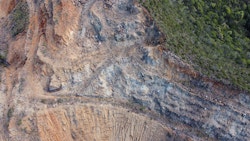
Abandoned nickel mine in New Caledonia
In the perspective of the World Soil Day, we celebrate soil as we remind ourselves the key role it plays in our lives, economies, and societies. Yet, its degradation keeps on rising across the world.
Our scientist, Beatrice Cordiano, has investigated into this phenomenon.
A treasure beneath our feet
Soil is a vital resource for living species, a reservoir of biodiversity which carries 25% of all biodiversity. There are more living organisms in a tablespoon of soil than there are people on Earth and that’s what makes it a healthy and fertile resource.
Soil provides 95% of our food. It filters waters, reduces flooding, regulates greenhouse gas emissions, gives us fuels and a base onto which to erect our homes. We literally rely on soil for everything we do.
However, we keep harming and abusing its generosity. Yet, soil, like any living being, holds its limits.
Soil is a finite resource: it regenerates at a rate of few centimetres every 1000 years; yet, it takes only a few moments to destroy it with urbanisation, chemical contamination, erosion, landslides and more. To give you an idea of the urgency we are facing with soil degradation today, half of the topsoil has already been lost in the last 150 years, and soil degradation will keep on rising if we do not offer time to regenerate.
The human factor
Soil degradation may occur naturally due to wind and rain falls, that sweep away soil’s top layer, thus changing its natural composition and structure. Yet, anthropogenic activities exacerbate the phenomenon, as they generate negative environmental, social, and economic impacts.
Many anthropogenic causes can trigger the depletion of soil quality. First, poor or improper farming practices, which may include salt build-up, might reduce soil fertility causing a loss in its nutrients. Deforestation also directly harms the ground, as it affects its water retention capacity, and provokes the lead to acute erosion episodes. In addition, an excess or misuse of fertilizers and pesticides can extinguish some of the soil’s beneficial micro-organisms. Indeed, industrial and mining activities mainly contribute to soil degradation, as well as urbanization and overgrazing processes, which deprive the soil of its vegetation layer, weakening its resilience towards the weather.
As you can see, the list is long, and the cause-effect relationships are complex. What is clear is that soil is becoming less and less fertile and thus, less productive, facing the acceleration of erosion, which makes the ground friable and impoverished.
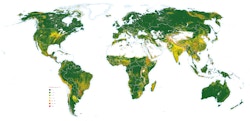
Global rates of soil displacement by water erosion
Where does eroded soil go?
Winds pick it up transporting it through the air, and waters drag it down into waterways, carrying along soil’s nutrients, as well as the fertilisers and pesticides which have been used by mankind’s activities. These flows might end up in a reservoir, in creeks and rivers, at the foot of a hillside, or in the ocean.
In the latter’s result, increased erosion fills waters with unwanted elements which, harm the entire ecosystem.
This is what we are witnessing with the Great Barrier Reef, as our vessel, currently circumnavigating in its waters, witnesses up-close the suffering of its ecosystems. Excess sediments are a major problem for reefs: not only do they cloud waters blocking the light, but they also speed up the growth of algae, which suffocate corals, damaging their tissue and eventually affecting their ability to reproduce and grow.
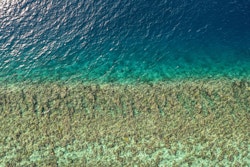
The Great Barrier Reef, Australia
By harming soil, we are making ourselves vulnerable
The effects of land degradation go way beyond the mere loss of fertile grounds, as it alters and pollutes waterways, while endangering entire ecosystems not only ashore, but also at sea. This may ultimately lead, in the worst-case scenario, to desertification.
Many sustainable development goals fall short without a fertile ground. A healthy soil is a great ally in our fight against global warming, since it naturally absorbs CO2 from the atmosphere. Yet, it can release the stored carbon and represent a major driving force of climate change, when degraded.
A soil that lacks water and nutrients, threatens crop growth and yield, destabilising our food system. It also has severe knock-on impacts on health, leading to malnutrition and disease, with the extreme case of migration of entire communities, to safer and more productive places.
Today, soil degradation threatens the well-being of 3.2 billion people, which is 40% of the current world population! Moreover, soil degradation is costing our economies, due to erosion. Precisely, more than 400$ billion each year are lost, because of the ground’s degeneration. Quite an expensive business, don’t you think?
Changing our habits to preserve the Planet
We do not talk much about soil. Yet, it is an incredible resource, vital to many of our activities. Unfortunately, our use of its generosity is not sustainable. Land use has a global dimension and, therefore, must be globally addressed.
We need to put into practice already known techniques and imagine new solutions to limit the loss of valuable soil. Changing our practices is part of the solution to prevent -and in some cases reverse- land degradation. Sometimes it’s just about simple acts like letting vegetation grow on soil so that the earth can be replenished with nutrients or building wind breaks and terracing, to reduce the effects of wind and water runoff. Other long-term solutions are also convenient, such as crop rotation, agroforestry, permaculture, hydroponics, reforestation programs.
Preserving soil is a big challenge, but with an increasing population we have no choice but to learn how to produce more with less, in a sustainable way, safeguarding this precious resource and protecting it from human-induced degradation.
Downloads
- World Population Prospects 2019 Highlights United Nations 13.6 MB, PDF Download
- FAO 2015 International Year of Soils 89.4 KB, PDF Download
